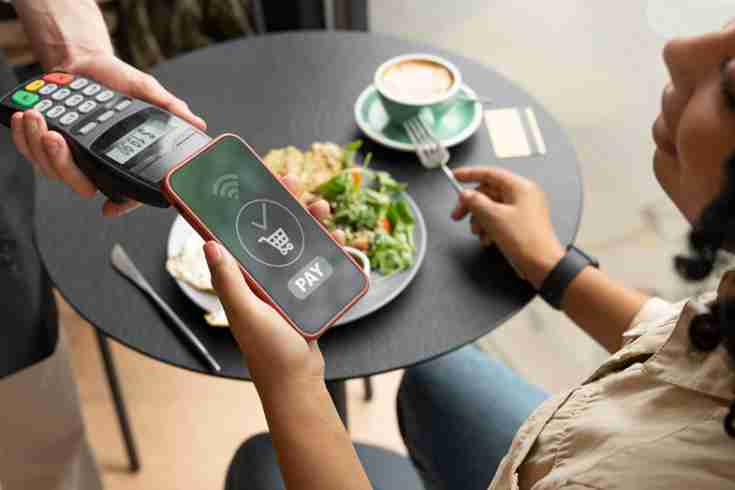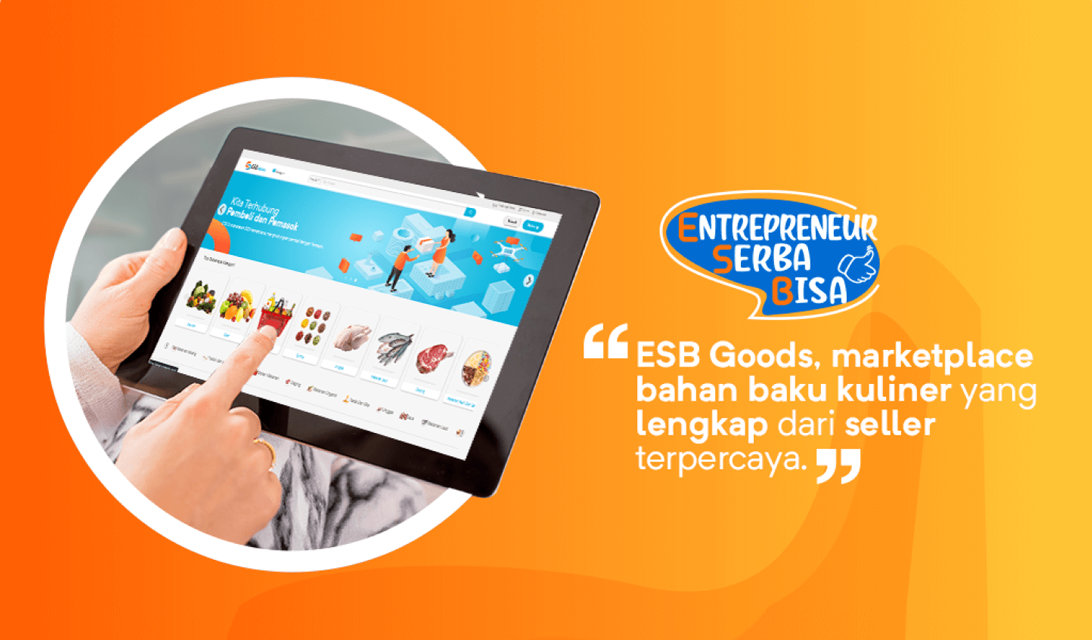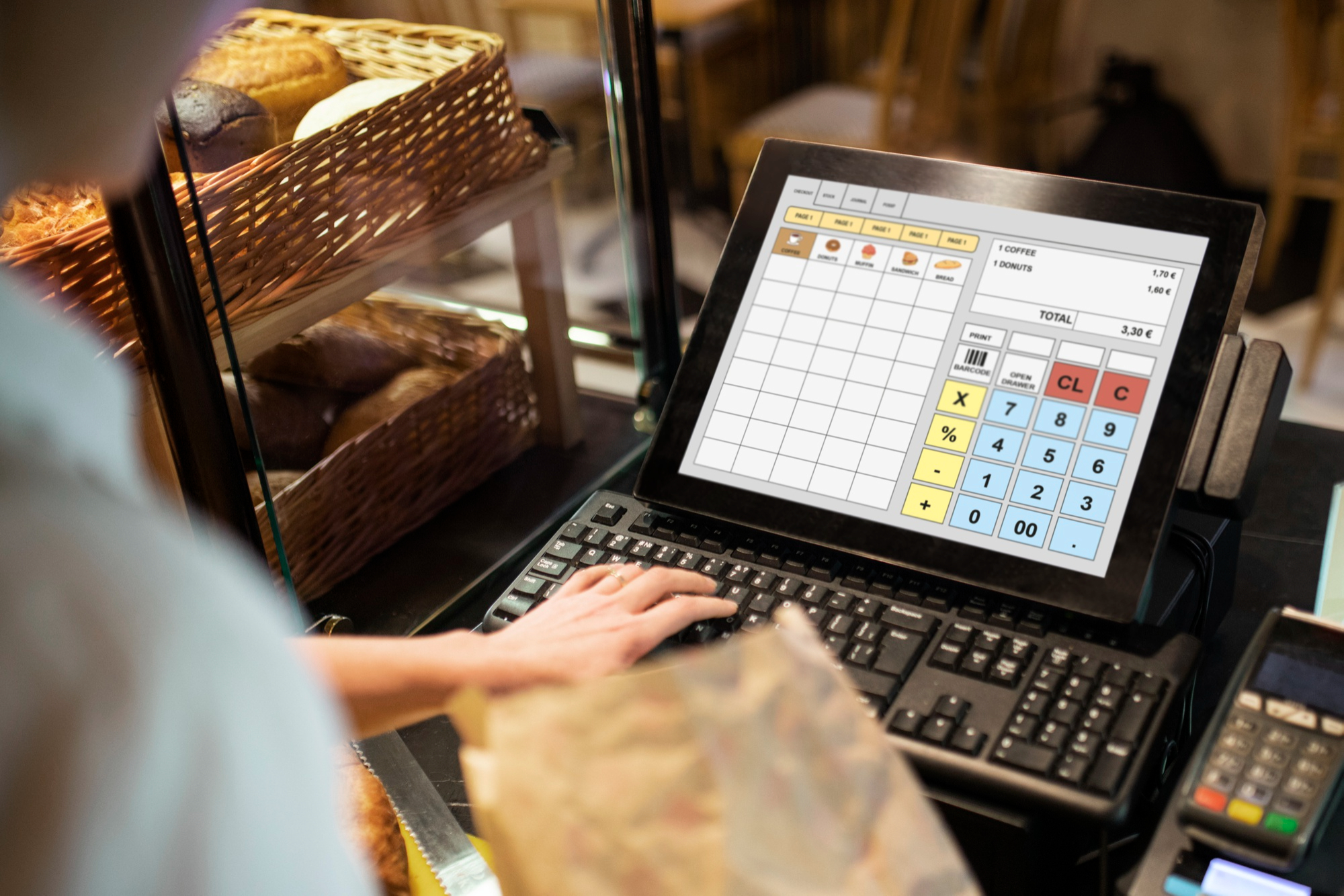 SHARE
SHARE
Getting to Know POS Applications: Types and How to Choose the Right One
Sovia
Have you ever been amazed by how quickly a cashier at your favorite café or fast-food restaurant processes your order, even while handling thousands of customers without missing a detail?
When it’s your turn, the barista or server swiftly records your order, prepares your coffee and snacks, and hands you the receipt—all in a matter of seconds.
This efficiency is made possible by a POS (Point of Sale) system, which is far more than just a cash register. It’s a tool designed to streamline business operations, from handling payments and recording transactions to managing inventory in real-time.
In this article, ESB will provide an in-depth explanation of what a POS system is, how it works, and its key benefits for modern businesses. Don't miss this comprehensive guide to understand why a POS system is the ultimate solution for simplifying business operations!
What is a POS System?
Source: Freepik.com
A Point of Sale system, commonly referred to as a POS cashier system, is a technology that enables businesses such as restaurants and retail outlets to process transactions seamlessly and efficiently.
From calculating prices and summing up totals to printing receipts or invoices, a POS system performs the duties of a cashier—but faster and more efficiently!
According to sources such as Impactverse.co and SoftwareSuggest.com, there are now over 50 brands offering POS cashier systems to support businesses in Indonesia. These systems are widely used across various industries, including restaurants, retail, healthcare clinics, entertainment, and service providers.
Imagine shopping at a restaurant or coffee shop where your selected items are scanned, their prices immediately displayed, and a receipt generated on the spot. This is a simple example of how a POS system facilitates transactions, eliminating manual calculations and providing a quicker, more efficient process.
How Does a POS System Work in the Food Business?
Source: Freepik.com
The operation of a POS system in the food business is relatively straightforward and easy to grasp.
Curious about how a POS system improves restaurant or culinary operations? Here's a detailed explanation:
1. Streamlining Order Management
Gone are the days of complicated manual processes! A POS system simplifies the entire ordering workflow.
- Mobile Ordering: Servers can record orders directly on a tablet or smartphone
- Integrated with the Cashier: All order data is automatically stored in the cashier system, enabling quick receipt printing when customers pay.
2. Flexible Menu Management
Managing your menu is a breeze with a POS system.
- Digital Menu Adjustments: Add, edit, or hide out-of-stock items with just a few clicks
- Dynamic Pricing: Create promotions, discounts, or adjust menu prices instantly
- Stock Transparency: The system updates you on items that are running low or out of stock.
3. Faster, Hassle-Free Payments
A POS system ensures smooth and seamless transactions for customers.
- Automated Calculations: Total costs, taxes, and discounts are calculated instantly, minimizing errors
- Multiple Payment Methods: Cash, debit/credit cards, e-wallets, and QR codes are all supported.
4. Simplified Restaurant Layout Management
Even table arrangements can be managed efficiently.
- Automatic Table Mapping: The system displays the table layout with corresponding table numbers, showing which are occupied or available
- Order Assignment by Table: Servers simply select the table number in the system to record orders, reducing mix-ups
- Flexible table management: Want to combine tables or split the bill for customers paying individually? A POS system can handle it all.
5. Accurate and Detailed Sales Reports
Having precise data is vital for crafting business strategies.
- Real-Time Reports: Access daily, weekly, or monthly reports with details on sales, revenue, and taxes
- Menu Analysis: Identify the best-selling and least popular menu items to refine your offerings.
6. Efficient Staff Management
A POS system isn’t just for operations—it also simplifies staff management.
- Customized Access: Set up sub-accounts with different levels of access, such as allowing servers to input orders while giving cashiers full access for payments
- Performance Tracking: View the revenue generated by each server to assess their performance.
By implementing a POS system, restaurant processes become more efficient, practical, and swift. Not only does this benefit your business, but it also enhances customer satisfaction!
Read more: Want a More Efficient Restaurant? Use This POS App!
Why Is a POS System Important for Culinary Businesses?
A POS system isn’t just about technology; it’s a vital solution for ensuring the smooth operation of your culinary business. Here’s why:
1. Boosting Restaurant Revenue
Believe it or not, a POS system can help increase your restaurant’s revenue by streamlining workflows and enhancing efficiency.
2. Improving Customer Service
Quick, error-free service leaves a lasting impression on customers, leading to better reviews and repeat visits.
3. Providing Better Business Insights
With accurate sales reports, you can make informed decisions about menu updates, promotions, or inventory management.
4. Streamlining Inventory Management
A POS system automatically updates inventory levels after each transaction and notifies you when stock is low, helping to avoid disruptions in operations.
Read more: Want a More Efficient Restaurant? Use This POS App!
Types of POS Systems
POS systems come in different types to suit different business needs. Choosing the right one will help you run operations more smoothly.
Here are the most common types:
1. Desktop POS
This POS runs on computers or laptops, either through a dedicated app, browser, or standalone software. It’s usually connected to devices like cash drawers, printers, and barcode scanners. Ideal for businesses with fixed cashier stations such as restaurants, cafes, clothing stores, or workshops.
2. Mobile POS
Mobile POS is accessible via smartphones, offering flexibility for small or mobile businesses.
While features are often basic, mainly for recording sales, it’s easy to use and provides quick access.
3. Kiosk POS
This self-service system allows customers to complete transactions without a cashier.
It’s efficient, reduces labor needs, and suits fast-moving products or self-service offerings like ticketing or fast food.
4. Cloud-Based POS
Cloud POS runs via the internet, letting you access data from any device, anytime.
Information is stored securely on cloud servers. Benefits include real-time updates, easier integration, and lower upfront costs. However, stable internet connectivity is essential for smooth operations.
5. Multichannel POS
This type combines online and offline sales in one system, such as from a website, physical store, or mobile app.
However, data from each channel may not sync perfectly, so customer information can become fragmented. Still, it’s helpful for tracking cross-channel performance.
6. Omnichannel POS
Unlike multichannel, this system offers a seamless experience across all touchpoints.
Customers enjoy consistent service whether they shop via social media, physical stores, or e-commerce.
It also supports integrated real-time stock management, discounts, and loyalty programs.
7. Industry-Specific POS
These POS systems are tailored for specific industries such as retail, F&B, or services. Features are customized based on the workflow and nature of the business.
For example, F&B systems may include kitchen order tracking, while retail systems support SKU stock management. The right system can streamline operations and boost efficiency.
Tips for Choosing the Right POS System for Your Business
Source: freepik.com
A POS system isn’t just about recording transactions. The right choice can boost efficiency and accelerate growth.
Here are some practical tips to help you choose the best POS for your business:
1. Match It to Your Business Scale
Small businesses often need only basic features like sales records and daily reports.
As your business grows, you’ll need a system that handles more transactions and customer data. Choose a POS that can scale with you.
2. Understand Your Industry Needs
Each industry has different POS requirements depending on product types and business processes. For example, restaurants need table ordering features, while retail stores require stock management. Make sure the POS is built to support your specific sector.
3. Set a Budget Early On
Factor in installation costs, monthly subscriptions, and any extra equipment. Avoid systems that are too expensive or too cheap without considering quality and long-term use. A low upfront cost might end up costing more if key features are missing.
4. Focus on Core Features
Besides transaction recording, look for features like inventory management, sales reporting, auto-discounts, and digital payment integration. The more complete the features, the easier it is to manage day-to-day operations.
5. Check System Scalability
A good business will grow, so choose a POS that can grow with you. Whether you're adding new outlets, products, or users, the system should adapt to your needs. This avoids costly system changes in the future.
6. Look at Integration Capabilities
Modern businesses often use multiple tools, from e-commerce platforms to accounting software. A good POS should integrate with other systems so data is managed in one place. This improves efficiency and minimizes errors.
7. Read User Reviews
Before deciding, explore other users’ experiences with the system. Reviews can reveal real-life pros and cons. Don’t just go by high ratings, read comments for deeper insights.
FAQ – POS Applications for F&B Businesses
1) What is a POS application?
A POS (Point of Sale) application records sales transactions, manages inventory, generates reports, and processes payments. Modern POS systems also integrate with online ordering and digital payments.
2) What types of POS applications are available?
Desktop POS, Mobile POS, Kiosk POS, Cloud-based POS, Multichannel POS, Omnichannel POS, and industry-specific POS (e.g., F&B, retail).
3) Why is a POS system important for F&B businesses?
It speeds up transactions, reduces errors, tracks stock, provides real-time reports, and improves overall operational efficiency.
4) What’s the difference between cloud-based POS and desktop POS?
Cloud POS runs online and is accessible from multiple devices anytime (needs stable internet). Desktop POS runs on a local computer with on-site installation (less dependent on internet, but less flexible).
5) How do I choose the right POS application?
Match it to your business size, industry needs, and budget; prioritize core features; ensure scalability; check integrations (e.g., accounting, e-commerce); and read user reviews.
Closing
For culinary business owners, choosing the right POS system is critical to managing restaurant operations effectively.
Integrated systems like ESB POS, supported by AI, can boost profits by up to 40%. For small businesses, ESB POSlite offers a streamlined solution that ensures smooth operations and enhanced customer comfort.
Trusted by over 30,000 outlets across Indonesia and Southeast Asia, ESB POS not only simplifies transactions but also optimizes business operations and financial management.
 SHARE
SHARE




